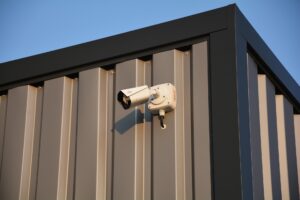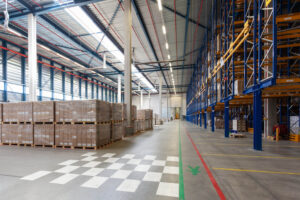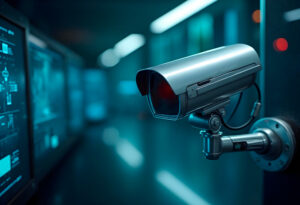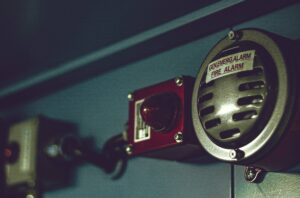Fire extinguishers are essential fire safety equipment that can make the difference between a minor incident and a devastating blaze if used correctly. Understanding which fire extinguisher to use for different types of fire scenarios is crucial for effective fire management and fire protection, potentially reducing property damage significantly when the right type of fire extinguisher is deployed appropriately.
Different types of fire require specific extinguisher types based on the fuel source involved. Choosing the correct fire extinguisher for each class of fire (A, B, C, D, or K), understanding how extinguishers work, and knowing the correct usage is essential for fire safety and effectiveness.
Key Takeaways
- Fires are categorized into five distinct fire classes (A, B, C, D, K) based on their fuel source, each requiring a specific extinguishing agent. These are the main types of fire classifications.
- ABC powder extinguishers (a type of dry powder fire extinguisher) cover many common household fire risks, making them ideal for general home protection.
- Never use water-based extinguishers (like a standard water fire extinguisher) on electrical fires (Class C) or cooking oil fires (Class K) as they can worsen the situation dangerously.
- The PASS method (Pull, Aim, Squeeze, Sweep) is the universal technique for operating almost any portable fire extinguisher effectively, ensuring you aim at the base of the fire.
- Fire extinguishers should be inspected monthly, professionally serviced annually, and replaced according to manufacturer guidelines (typically 5-15 years depending on the type of extinguisher).
Understanding Fire Classes: The Foundation of Extinguisher Selection
Selecting the right fire extinguisher type begins with understanding the type of fire you’re fighting. Fires involving different fuel sources are classified into five main categories (fire classes), and using the wrong extinguisher can be ineffective or even dangerous during fire fighting. According to fire safety experts, many home fires start in kitchens, where choosing the incorrect extinguisher type can escalate a manageable situation.
The classification system breaks down fires into these categories:
- Class A Fires: Ordinary combustibles like wood, paper, cloth, and plastics. A water fire extinguisher is often effective here.
- Class B Fires: Flammable liquids including gasoline, oil, grease, and solvents (often called a liquid fire). Foam fire extinguishers or powder fire extinguishers are typically used.
- C Fires: Energized electrical equipment (appliances, wiring, outlets). Requires non-conductive agents like those in a CO2 fire extinguisher or dry powder extinguisher.
- Class D Fires: Combustible metals such as magnesium, titanium, and sodium. Requires specialised powder extinguishers. Can sometimes involve steel fire scenarios in industrial settings.
- Class K: Cooking oils and fats (primarily in commercial kitchens). Requires wet chemical extinguishers.

ABC Multipurpose Extinguishers: Your First Line of Defence
For most homes and offices, an ABC powder extinguisher (a common dry powder fire extinguisher) offers complete fire protection. These versatile units contain dry chemical agents effective on Class A fires, Class B fires, and C fires, covering a wide range of common fire risks. They are among the most common types of fire extinguishers.
The advantages include adaptability and cost-effectiveness. However, the powder fire residue requires thorough cleanup and can damage sensitive electrical equipment. While excellent general-purpose tools from the available range of fire extinguishers, specialised environments might need other solutions like CO2 fire extinguishers or foam extinguishers.
It is recommended to place ABC extinguishers centrally for quick access during an emergency. For most homes, this means at least one per floor, especially near high-risk areas like kitchens and garages.
Class A Extinguishers: Handling Ordinary Combustibles
Class A extinguishers are specifically designed to combat fires involving everyday materials. Water fire extinguishers are the classic example, cooling the material effectively. Foam fire extinguishers are used here too, cooling and smothering. These water-based extinguishers are highly effective on class A fires.
The numerical fire rating (e.g., 2A, 13A fire rating) on these extinguishers helps quantify their fire fighting capacity against ordinary combustible fires. A higher number means greater capacity. You’ll find these extinguishers commonly in schools, offices, and homes. Check the label on the body of the fire extinguisher for its rating and suitability.
Class B Extinguishers: Fighting Flammable Liquid Fires
When dealing with flammable liquid fires (B fires), Class B extinguishers are essential. These specialised extinguishers use agents like foam or dry powder to suppress vapors or smother the fire, separating fuel from oxygen.
A foam fire extinguisher creates a blanket over the liquid. A CO2 fire extinguisher displaces oxygen and cools. Dry powder extinguishers work by interrupting the chemical reaction. The rating (e.g., 20B) indicates the square footage of liquid fire the extinguisher should be used on effectively. These are crucial for workshops, garages, and industrial areas handling flammable liquids.
Class C Extinguishers: Addressing Electrical Hazards
Electrical fires present unique dangers. Class C extinguishers are designed for use on energised electrical equipment. They use non-conductive agents. The most common types are carbon dioxide fire extinguishers (CO2) and dry powder fire extinguishers (often the ABC type). CO2 fire extinguishers leave no residue, making them ideal for sensitive electronics. While effective, dry powder fire residue can be problematic for electronics. Some specialised water mist extinguishers can sometimes be used on some electrical fires, but CO2 and dry powder are standard.
Remember: Never use a standard water extinguisher on electrical fires. If possible, disconnect the power source before starting fire extinguishing efforts. These extinguishers are suitable for server rooms, workshops, and near fuse boxes.
I recommend placing Class C extinguishers near fire alarm systems, server rooms, utility closets, and areas with concentrated electrical equipment.
Specialised Extinguishers: Class D and K
Some scenarios require highly specialised extinguishers. Class D extinguishers use special dry powder agents for combustible metal fires (Class D fires) found in industrial settings. Using the wrong type of extinguisher here can be extremely dangerous. These might be a steel fire extinguisher body design due to the industrial application, often filled with specific powders like sodium chloride or graphite.
Class K extinguishers use wet chemical fire extinguishers agents designed for high-temperature cooking oil and fat fires (chemical fire scenarios in kitchens). Wet chemical extinguishers create a soap-like layer to cool and prevent reignition, making them more effective than older chemical fire extinguishers on modern cooking oils. They might be integrated into fire suppression systems. Fire blankets are also useful fire safety equipment in kitchens for smothering small pan fires.

Proper Usage and Maintenance: The PASS Method
Knowing which extinguisher should be used is only half the battle. Proper usage is key. The PASS method is a simple guide:
- Pull the pin.
- Aim low, at the base of the fire.
- Squeeze the handle.
- Sweep side to side, covering the fire.
Attempt fire fighting only on small, contained fires with a clear escape path. Focus on extinguishing the fire completely if safe to do so. The size of fire dictates whether you should fight it or evacuate.
Proper maintenance ensures fire extinguishers work when needed:
- Check pressure gauges monthly.
- Inspect the body of the fire extinguisher for damage.
- Schedule annual professional inspections as part of your fire prevention plan.
- Replace extinguishers based on type and age (check manufacturer recommendations). Many powder extinguishers last 10-12 years, while CO2 extinguishers might last longer.
- Ensure portable fire extinguishers are visible and accessible.
Businesses must follow OSHA/NFPA guidelines for placement, inspection, and documentation of all fire safety equipment, potentially including fixed fire extinguishing systems. Consider the specific type of fire risk in each area when selecting from the full range of fire extinguishers available. Look for high quality fire safety equipment from reputable suppliers in the fire industry. You can often buy fire extinguishers online or from specialized stores.
Sources
swartzfireandsafety.com – A Comprehensive Guide to Fire Extinguisher Types
fire-risk-assessment-network.com – Types Fire Extinguisher
lowes.com – Choosing a Fire Extinguisher
nationwide.com – Fire Extinguisher Safety
usfa.fema.gov – Fire Extinguishers












